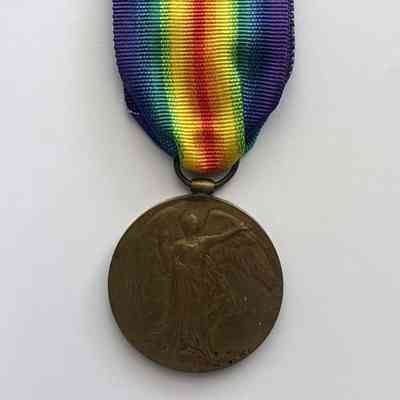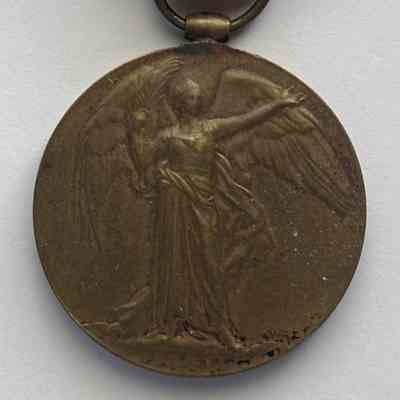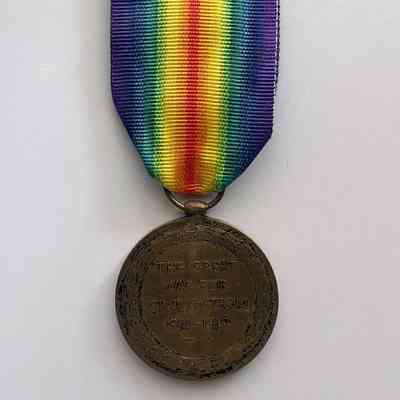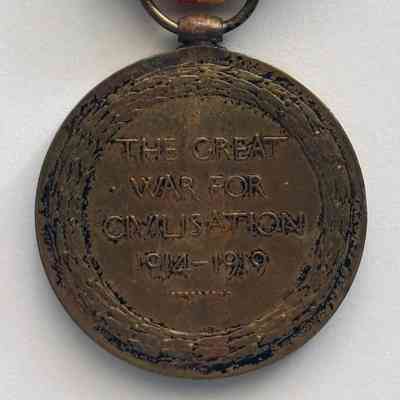Victory Medal 1914-1919
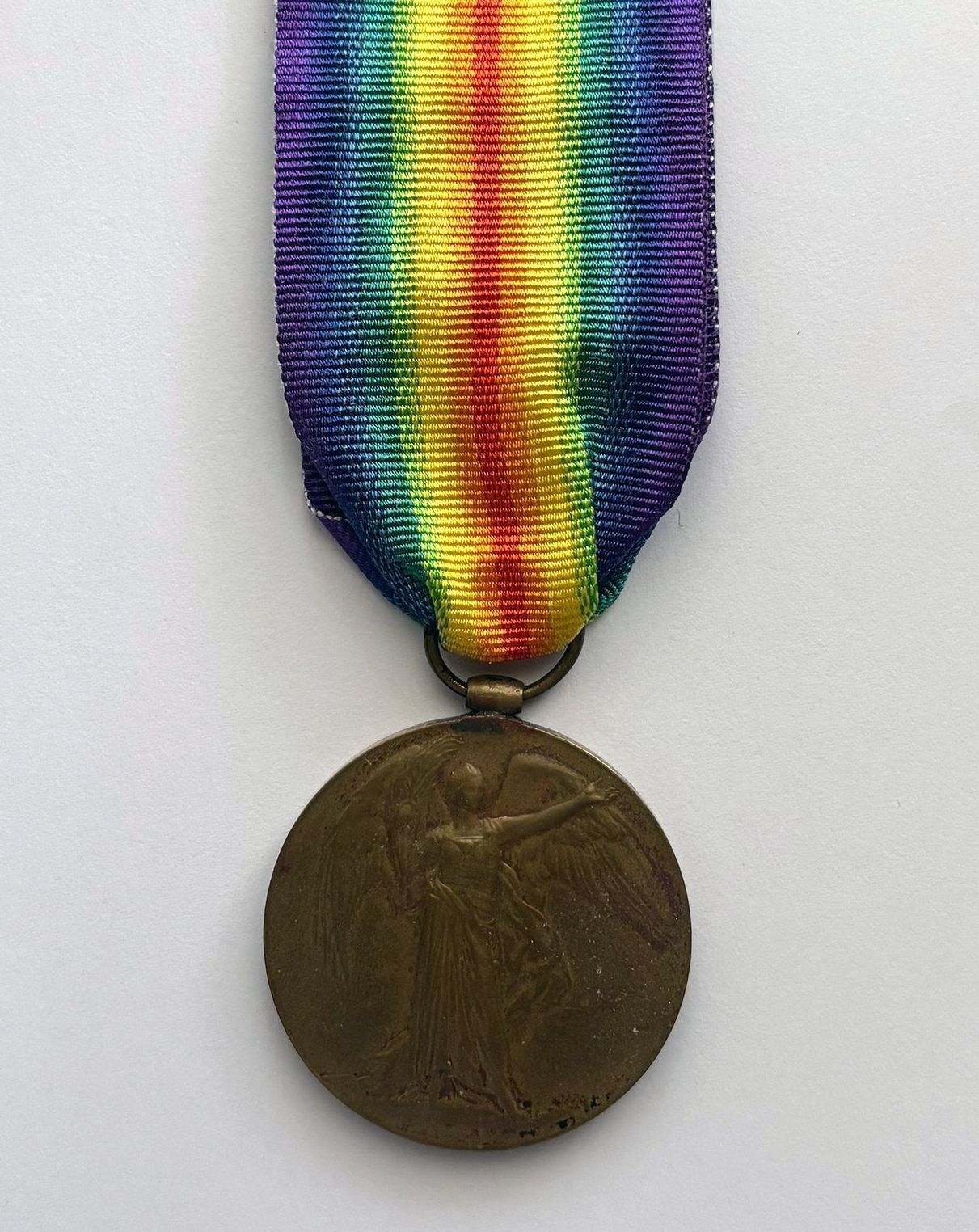
2025.1
Obverse of the Commonwealth Victory Medal showing the winged figure of Victory.
Name/Title
Victory Medal 1914-1919Entry/Object ID
2025.1Description
The obverse shows the winged, full-length, full-front, figure of 'Victory' (or 'Victoria') with her left arm extended and holding a palm branch in her right hand, similar to the statue surmounting the Queen Victoria Memorial, in front of Buckingham Palace in London. The reverse has the words "THE GREAT / WAR FOR / CIVILISATION / 1914–1919" in four lines, all surrounded by a laurel wreath.[ The watered 39 millimetres (1.5 in) wide ribbon has an iridescent colour scheme, with the violet moving through to a central red stripe where both schemes meet. It attaches to the medal through a ring suspender.Use
Victory Medal posthumously awarded to 2649 Sergeant Joseph David Mahoney, who was killed in action in France on April 8, 1917. Joseph was born in Fulham, South Australia, to Michael and Alma Mahoney. A gardener, he was also a serving member of the Civilian Military Forces 78th Battalion, holding the rank of Sergeant. On April 19, 1915, with the written permission of his father, Joseph enlisted at the Keswick recruiting office, with the 10th Battalion, 8th Reinforcements, one of many young men who volunteered throughout WW1. Embarking for war in September the same year, Sergeant Mahoney disembarked at Alexandria, Egypt four days after Christmas, 1915. Australian troops were sent to Egypt to train for trench warfare. The first contingent were sent to Gallipoli, or service in Egypt and Palestine, while those who arrived later, were often sent to the Western Front. On the March 27, 1916 Joseph was sent to France, a six day voyage, arriving in Marseilles on April 3. The 10th Battalion would be involved with "bitter trench warfare", in the Somme, and like many of his comrades Joseph was injured, suffering a gunshot wound (GSW) at Pozieres, on July 27, 1916. Admitted to the 13th General Hospital at Boulogne, he received medical care before being discharged on August 7. Sergeant Mahoney's family was notified of his wounding - such information was usually sent as a short pro-forma page, which included scant information, other than confirmation of the incident and an address for mail to be sent. As can be seen from a letter sent by his mother, to a Major Lean, Alma was concerned by such lack of detail, asking ". . . .What Part of the body the Wounds are (sic) . . . where he is likely to be . . . " Upon discharge, Joseph returned to duty and rejoined his battalion, now stationed in Ypres, Flanders (Belgium). He was promoted to Lance Corporal on September 22, and a month later, to Corporal. Trench warfare contributed to many ailments which affected the soldiers involved, one being Trench Foot, which causes the feet to swell and begin to decay. This medical condition was usually caused by exposure to damp and cold conditions and the restriction of blood circulation. In efforts to reduce this disease, soldiers were encouraged to wash their feet and change into dry socks regularly, with regular foot inspections being carried out. Sergeant Mahoney was one of many to suffer from this ailment , and in mid November 1916 he was sent to hospital for treatment. Six days after admission, he returned to his battalion, once again stationed in the Somme, France. In January 1917, Joseph was promoted to Sergeant, with the 10th Battalion later involved in action at Lourverval, France on April 8 and 9. Sadly, Sergeant Joseph David Mahoney was one of those killed on April 8, 1917, his body was never recovered. This Victory Medal was one of three medals that 2649 Sergeant Joseph David Mahoney's parents would receive, his father Michael signed a receipt acknowledging its arrival, almost six years after his son's death. 2649 Sgt. J.D. Mahoney is remembered at the Villers-Bretonneux Memorial, in the Somme Valley, one of more than 10,000 Australians who died in France during the First World War but have no known grave.Category
Medal
War Memorabilia
